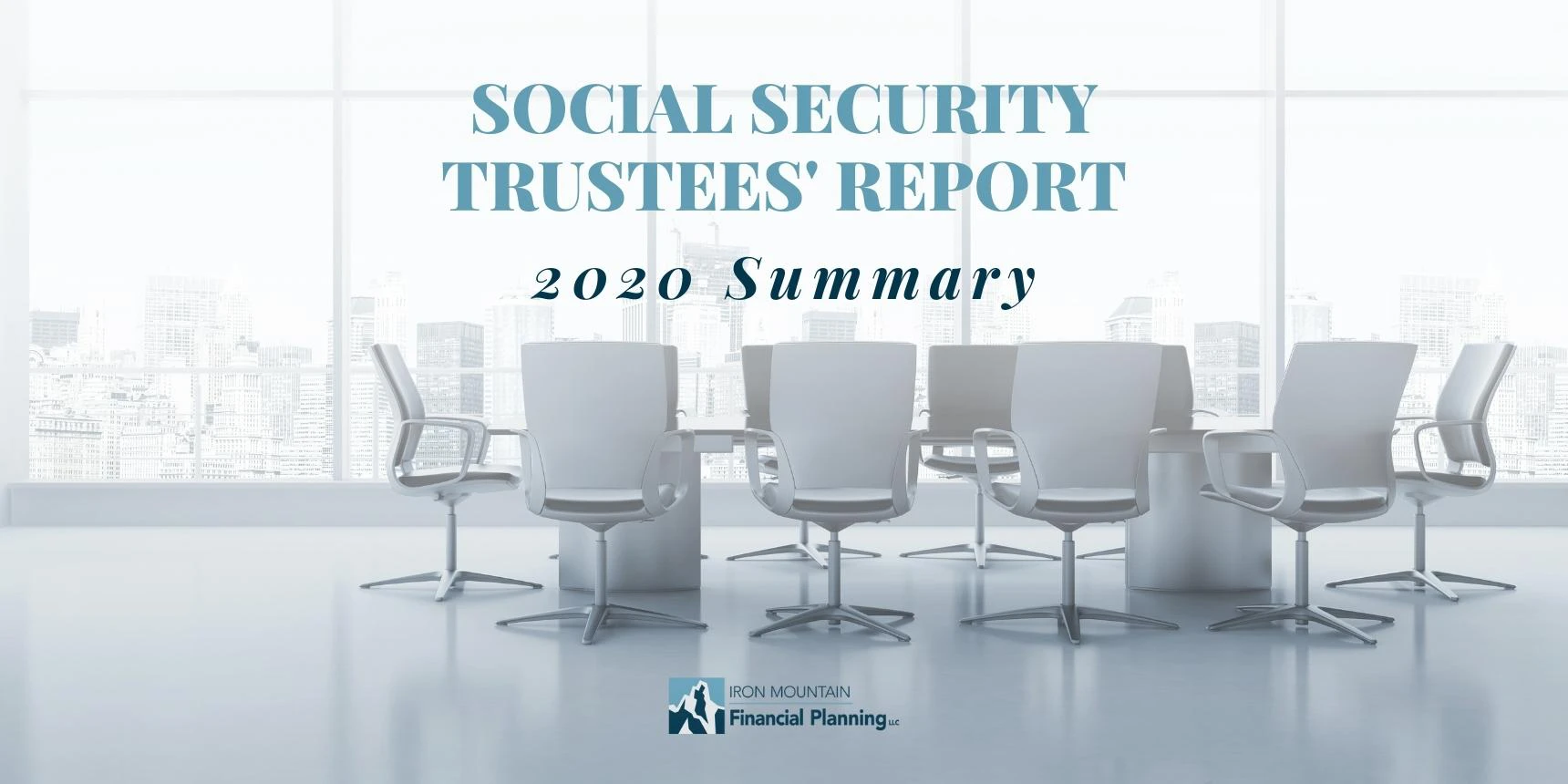The Social Security Board of Trustees released their annual report at the end of April once again this year. The report for 2020 spans 276 pages that go into detail about the current financial status, future assumptions, and projections.
Yet again, this most recent report continues the trend that the Social Security program faces long term funding shortages that will need to be addressed sooner or later.
The Social Security program is technically defined as Old Age Survivors and Disability Income (OASDI). This is split between the Old Age and Survivors Insurance program (OASI aka Retirement Benefits) and the Disability Insurance program (DI).
The Retirement Benefits Trust Fund and the Disability Insurance Trust Fund are legally two separate entities and I will focus the remainder of this article on the Retirement Benefits side of the ledger.
Not Much Change from Last year
Like last year’s report, the OASI Trust fund is still projected to be depleted in 2034. At that time, the taxes collected would be enough to pay 76 percent of expected benefits; AND the Trust Fund would be exhausted. All beneficiaries would face a 24 percent reduction in benefits, 14 years from now.
As most of you are aware, 14 years passes in a blink of an eye. The Trustees outline options, if implemented immediately, would resolve the long-term deficit in the Social Security program. They would include increasing revenues by an amount equivalent to a payroll tax rate increase of 3.14 percent; reducing current and future benefits by 19 percent or some combination of raising taxes and reducing scheduled benefits.
Delaying implementation of these options to 2035 increases the required payroll tax increase to 4.13 percent or the reduction of future benefits by 25 percent in order to keep the Social Security program solvent the entire 75-year projection period. It should be clear to all that the soon a change, or a combination of changes, is implemented, the small the change needs to be.
Same Amount of Options
While lawmakers have a broad list of options that could close the Social Security long-term financing shortfall, another consideration is allowing time for the changes to be implemented. Delays to implementing needed changes limits available time to gradually phase in changes and give today’s workers less time to plan for changes in benefits or taxes. If nothing else, this year’s report serves as an important reminder that the Social Security program’s funding shortfall needs to be addressed soon.
If you find yourself wanting to feel more confident about how Social Security retirement benefits fit into the puzzle of your retirement planning – it’s what I do for a living. Click here to schedule an introductory call.
Here’s a link to the 2020 Press Release: https://www.ssa.gov/news/press/releases/2020/#4-2020-5
Some interesting highlights from the report include:
- Projections in the 2020 report do not reflect the potential effects of the COVID-19 pandemic.
- An estimated 178 million people had earnings covered by Social Security and paid payroll taxes which contributed to the total income of $805 billion including the interest from the OASI trust fund and taxation of benefits.
- An estimated 54 million retired workers and survivors received retirement benefits at a total cost of $911.4 billion including $902.8 billion in benefits paid, $3.7 billion in administrative costs and $4.9 billion to the Railroad Retirement financial interchange.
- While the OASI trust fund reserves where at $2,797.9 billion at the start of 2019, they ended at $2,804.3 billion for a net gain of $6.4 billion – a welcome change from 2018’s $22.4 billion net loss.
- The expected depletion of the OASI trust fund in 2034 remains unchanged from the previous year’s estimates.






